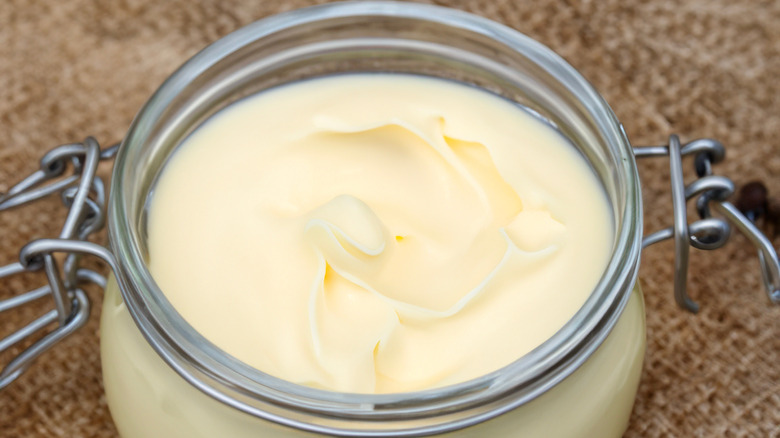Try Beef Tallow As Your Seasoning Binder And Taste The Magic
Throughout history, ancient and modern civilizations have used beef tallow for cooking (as well as soaps, candles, and skincare). Often called "beef drippings," tallow is used extensively in British and Scottish recipes, such as Christmas pudding and haggis. Belgium's famous frites are fried in beef tallow, as were McDonald's fries at one time. When incorporated into pie dough, it yields flaky crusts. Beef tallow is made by rendering suet, the fat that accumulates around a cow's kidneys. When strained, it is a quality option for cooking food and has a high smoke point of 420 degrees Fahrenheit. Tallow got a bad rap for a while because it's a saturated fat, like coconut oil and butter. However, further research now indicates that, in moderation, it has potential health benefits.
Perhaps an overlooked use for beef tallow is as a binding agent for seasoning meats, poultry, and vegetables. In other words, it can keep a dry rub's ingredients from slipping off the protein you're roasting or grilling. At the same time, it imparts flavor and locks in moisture. Dijon mustard and olive oil are examples of a seasoning binder, as is mayonnaise. Beef tallow works best on lean cuts of meat that don't have enough fat to hold the seasoning in place. Before cooking the protein, apply tallow sparingly over its entire surface, and after a few minutes, gently pat any seasoning or a three-ingredient dry rub on top of the tallow coating.
It's easy to make beef tallow at home
Making beef tallow at home is a relatively easy process. First, you'll need some fat trimmed from a fatty cut of beef, like brisket. Whether you trim your own brisket or have a butcher trim it for you, never throw away brisket fat, which is ideal for tallow. Add the fat to a stockpot and simmer it slowly. You want to avoid the fat from burning, which will affect the tallow's flavor, so make sure to keep the heat source low. Once the fat has been rendered as a liquid, remove and discard the large pieces, and strain the tallow twice through a cheesecloth-lined strainer.
The absolute best method to store tallow will keep it in liquid form, which will be much easier to spoon or ladle out. Pour it into a Mason jar or other glass container, and don't be tempted to refrigerate it, as the tallow will harden and be difficult to use when you need it.
As a seasoning binder, tallow can't be beaten when you're smoking brisket, schmearing it over your roast chicken to enhance flavor, or tossing it with Brussels sprouts before roasting. Its absolute best use is as a replacement for oil or butter when making roast potatoes or cornbread. However, you decide to use beef tallow, it's sure to work some flavor magic on any food you prepare.

